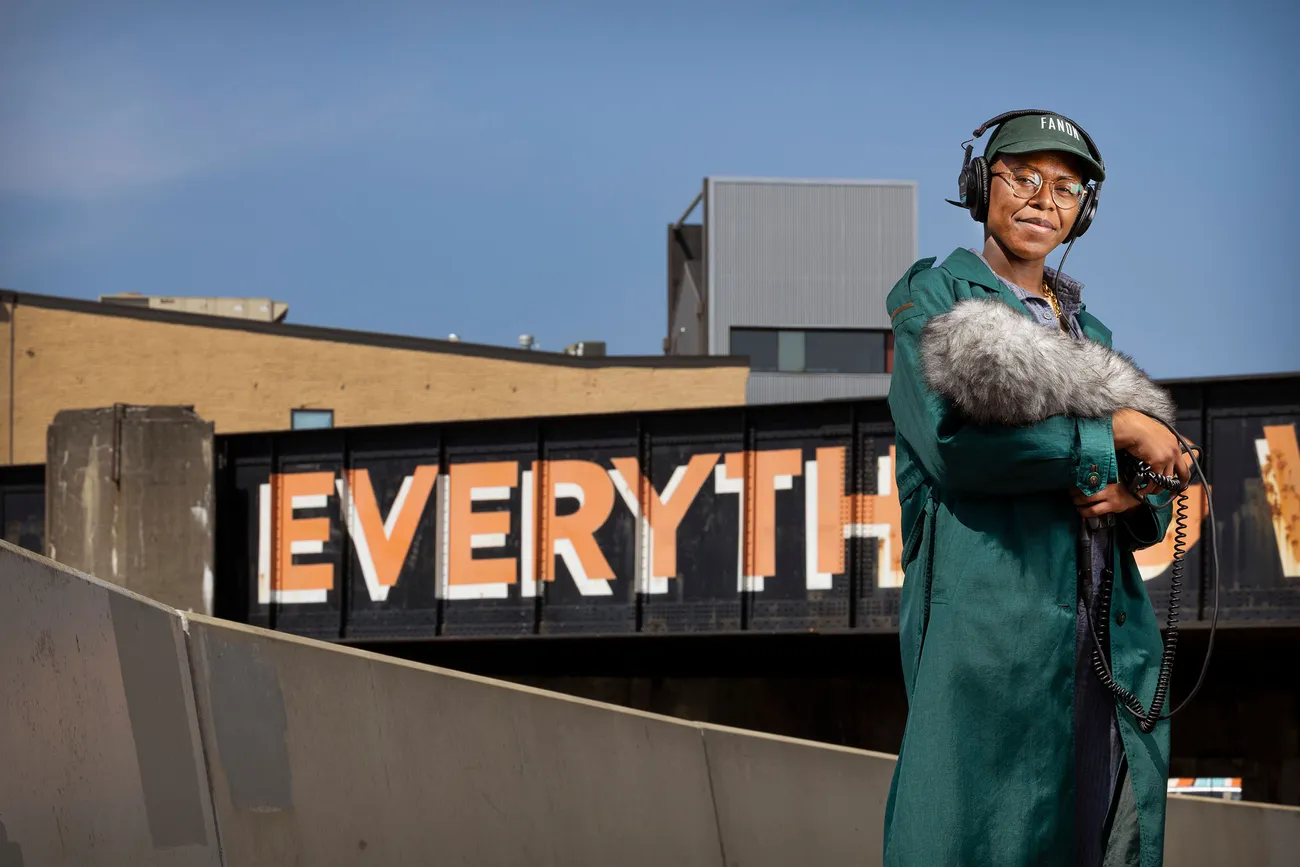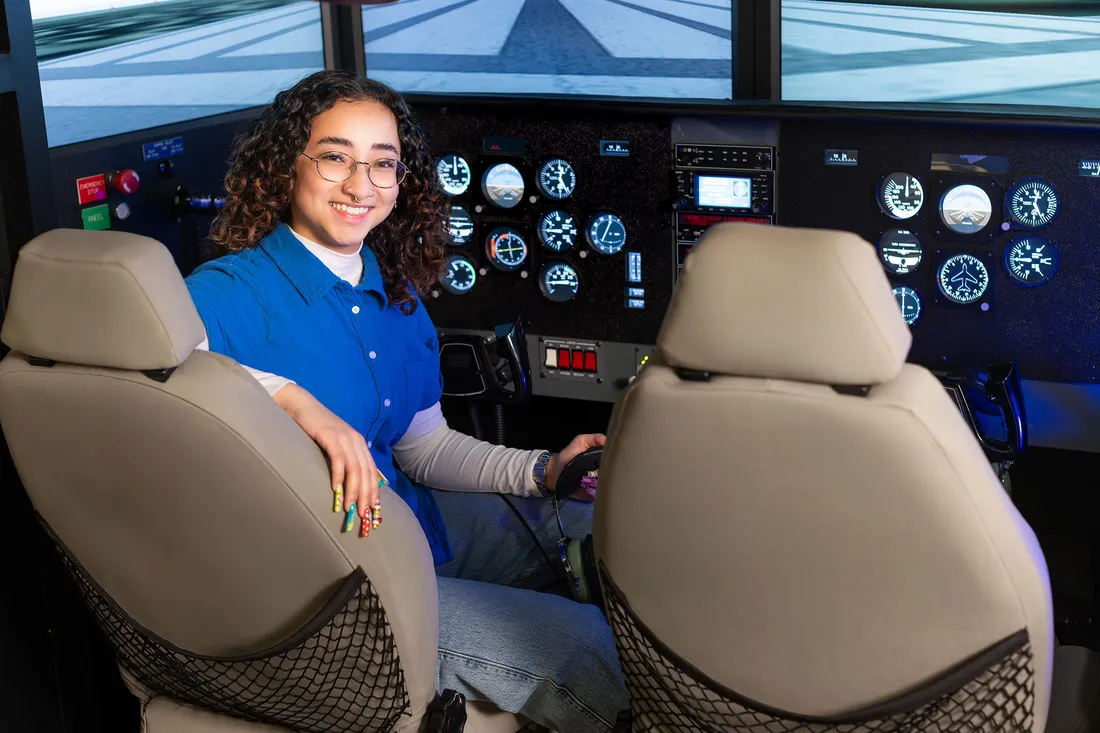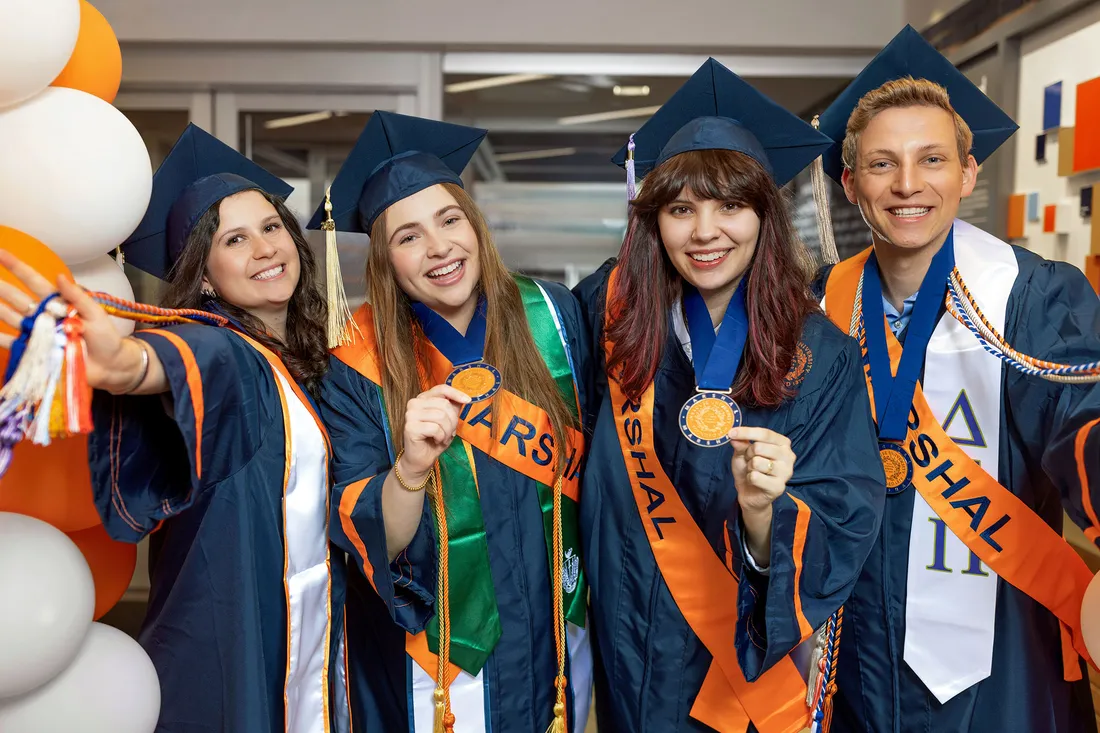In the summer months, how often do you find yourself tuning in to the whirring of your building’s HVAC system? Or tuning it out? That ambient hum—and our relationship to it—was at the heart of Post Occupants, an audio installation created in 2024 by Syracuse University School of Architecture professor Jess Myers for an exhibition at Architecture Center Houston. Featuring recordings from HVAC systems in different buildings—a restaurant, a corporate tower, a YMCA and the center itself—the installation combined ambient sound with the sounds of everyday activities happening in those air-conditioned spaces. “Your mind tries to tune out the sound of the HVAC system and ignore it, but it’s effectively the life support of all activity that happens in Houston,” she says.
While Myers isn’t focused on traditional city planning as an urbanist, she is invested in how cities work at their level of use. She’s most curious about how life flows through built environments and how people make meaning of space. While policy, design and form often stand at the forefront of architecture and city planning, she believes the way people live in and interact with these spaces is often overlooked. For her, sound studies expand understanding of place beyond the visual medium, drawing on the sound of different voices and soundscapes to create a more robust picture of a location through time. “In both city planning and architecture, the quality of observation for life can get a bit lost,” says Myers, an essayist, editor, curator and podcaster. “In my teaching, I try to develop ways of thinking that push students to develop an eye for how life is working in this space.”
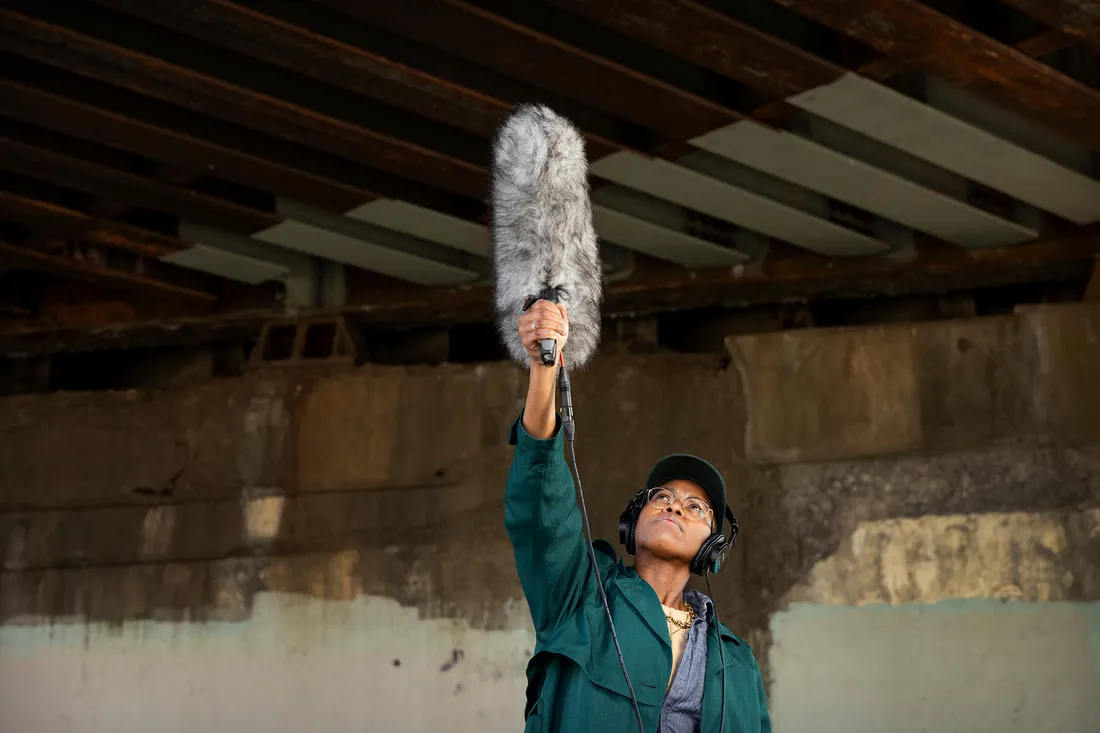
School of Architecture professor Jess Myers demonstrates how she captures city soundscapes. She believes sound plays an important role in understanding how life interacts with built environments and people make meaning of public spaces.
A decade ago, while working on a master’s degree in city planning at Massachusetts Institute of Technology, Myers began examining the intersection of identity politics, fear and security policy in public spaces through her podcast, Here There Be Dragons. She viewed the podcast as a way to avoid “parachuting into a neighborhood” and producing bureaucratic reports. “I was interested in gathering research that could be used in a more casual way,” she says. “And how people might use that research to speak to their own experiences with each other.”
In the first three seasons of Here There Be Dragons, Myers explored New York City, Paris and Stockholm, bringing to life the voices of residents and their safety concerns. In February, Myers began releasing episodes of the fourth season devoted to Odesa, Ukraine. “It’s probably the hardest project I’ve ever done,” she says.
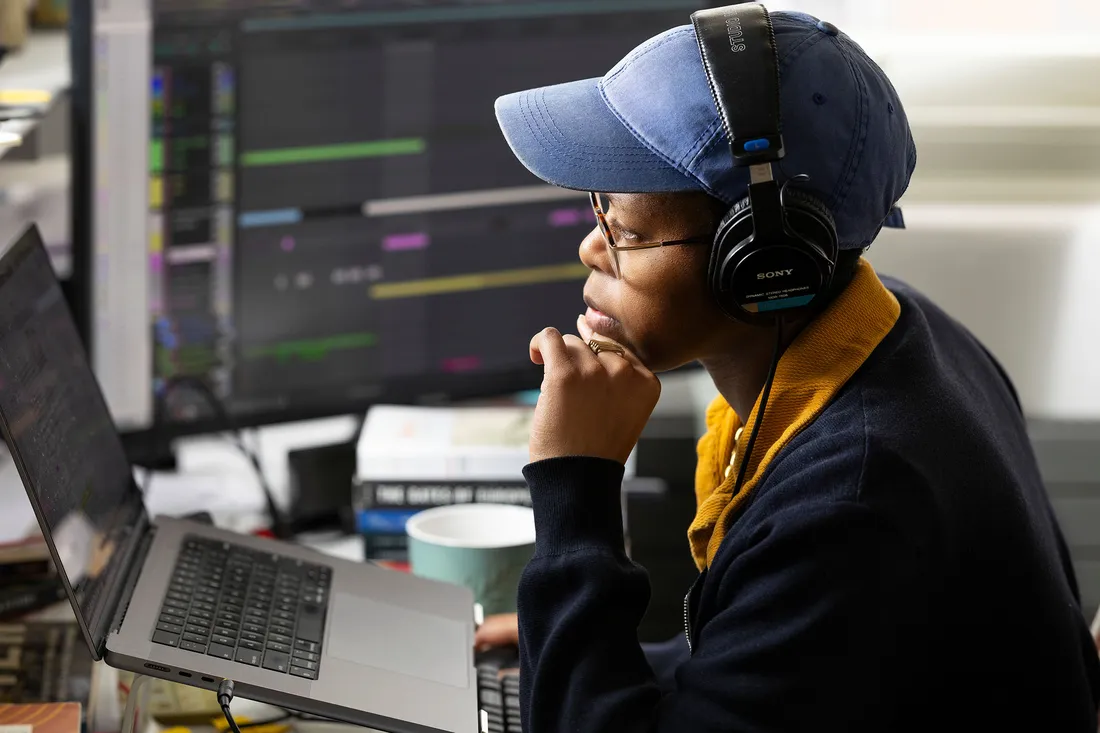
For her podcast, Here There Be Dragons, Myers gathers and edits numerous interviews and sound recordings. The podcast’s fourth season focuses on Odesa, Ukraine.
Exploring Odesa, Ukraine
In Odesa—“the pearl of the Black Sea”—Myers saw the opportunity to explore a multicultural port city influenced socially and culturally by generations of ethnic groups. She began planning a podcast about the city in 2020, but the COVID pandemic and later the Russian invasion made it nearly impossible to interview residents in the war-torn region. Undeterred, she sought out members of the Odesa diaspora, meeting with transplants in the New York tristate area as well as in Estonia, France and Germany. “Every time I traveled anywhere, I was looking for people who were from Odesa,” she says.
Despite the challenges, most of the 50 interviews conducted were with people still in Odesa. Myers collaborated with Odesa sound consultant Ivan Samokrutkin, an indie music producer who enlisted experimental musicians to record sound walks through their favorite neighborhoods. At the heart of many conversations was the City Center, a UNESCO World Heritage Site that is now endangered. There’s talk of the Opera House, House of Scientists and the Potemkin Stairs, as well as differing views on housing and transportation.
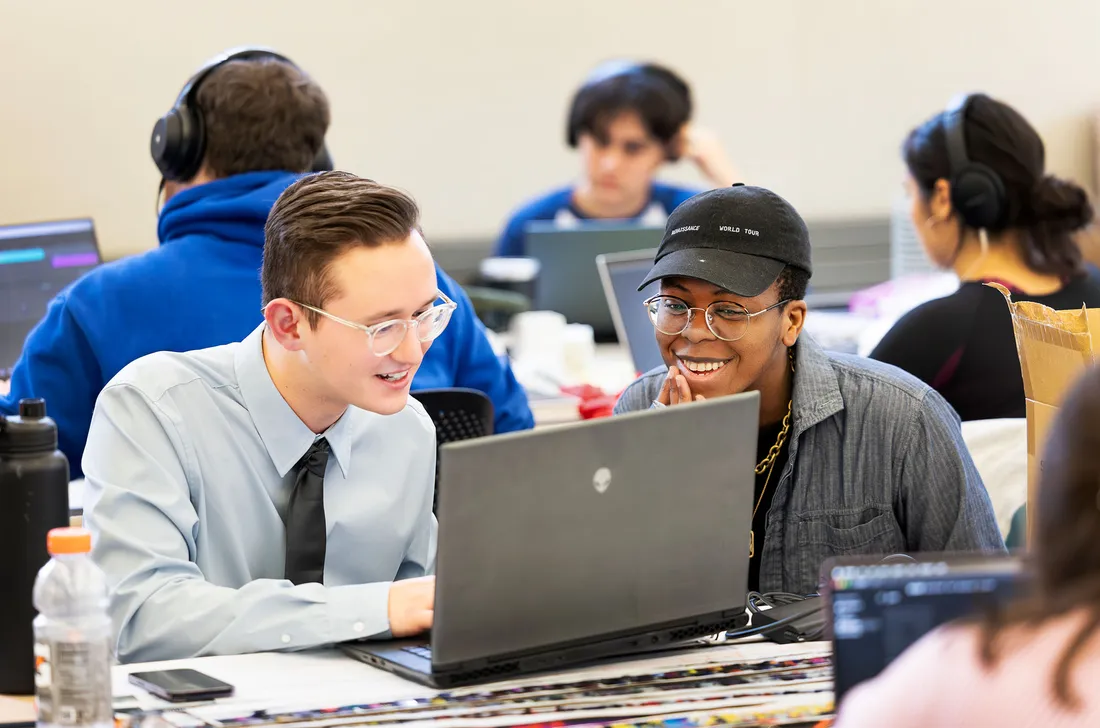
In her class, Architecture and Occupancy: Bridging Research and Time-Based Media, Myers meets with architecture student Parker Kulis ’25 to review his film project, (HOMO)topia! Queer Nightclubs as Ecosystems of Desire and Dispossession, which examines the promise and perils of queer space-making under the flickering lights of drag shows, dance floors and bar stools.
In bringing the project together, Myers worked with sound designer and producer Adriene Lilly and recruited School of Architecture students Nicole Trubskyy ’27 and Theodore Dokla ’25 as research assistants supported by a SOURCE grant who also served as English translation voice actors on the podcast. Trubskyy, who is fluent in Russian and understands Ukrainian, advised on translation and cultural context for the interviews, while Dokla created an interactive sound map, combining audio from key locations with architectural insight to convey the city’s layered soundscape.
A recording of Cathedral Square in the City Center, for example, features disparate sounds of church bells and an air raid siren. “I had to draw upon my architecture experience to experiment with the recording software,” Dokla says. “It was challenging to create meaningful representations of sound and space and give you this soundscape of the city.”
Trubskyy—a first-generation American from a Ukrainian family—was fascinated by the unique dialect, noting that it’s influenced by several languages and includes a lot of slang. “The language in Odesa is very different than it is for the rest of Ukraine,” she says. “It has its own distinctive vocabulary and grammar. They’re very humorous, and it’s sometimes difficult to pick up on whether they’re being serious or not.”
Capturing Changes in Occupied Places
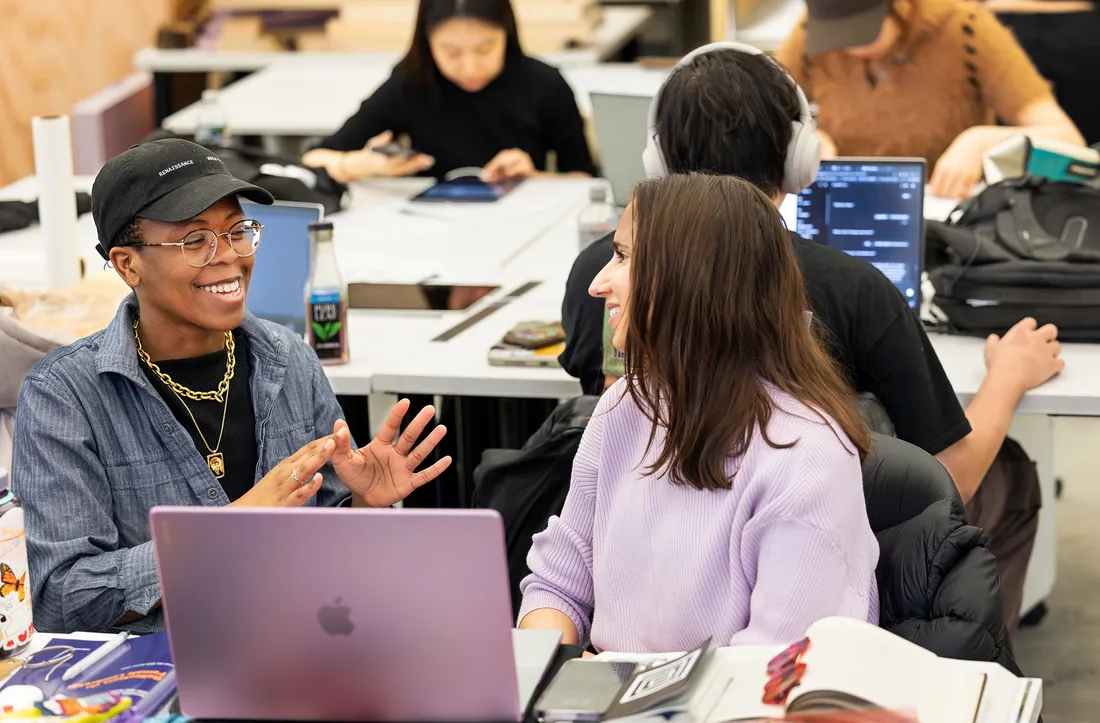
Myers and architecture student Ella Plowman ’25 discuss her project, Patchwork: Design and Policy in Austin Public Schools, which features a quilt installation and a sound piece. Through quilting and interviews, Plowman weaves together the clashes between grassroots organizing, state policy and contemporary school design in the sprawling education system of Austin, Texas.
Myers emphasizes sound studies as an important tool for architecture students to hone their observation skills. This semester, students in her course Architecture and Occupancy: Bridging Research and Time-Based Media developed research projects that reframe traditional research methodologies. Through a mix of photography, video, sketching and sound recordings, they produced podcasts, performances, installations and exhibitions that examine the intersections of time, public spaces and society.
Dokla, who took the class and is interested in urban design, interviewed Syracuse city residents about their relationship with the Interstate 81 project for an audio piece that blends in sounds of the highway. He viewed the project as an opportunity to network with residents and amplify their voices. “This could be a very valuable experience to draw on if I want to do community projects in my future,” he says.
Through their projects, Myers wanted the students to capture the ongoing relationships between people and place. She wanted them to listen, be attentive to their surroundings and connect with the everyday. By integrating these observations, they’ll better understand how a space functions and what it represents to those who identify with it. “For me,” Myers says, “sound and time-based works have this capacity to put forward that act of observing how life encounters the built environment and how we make meaning from it.”
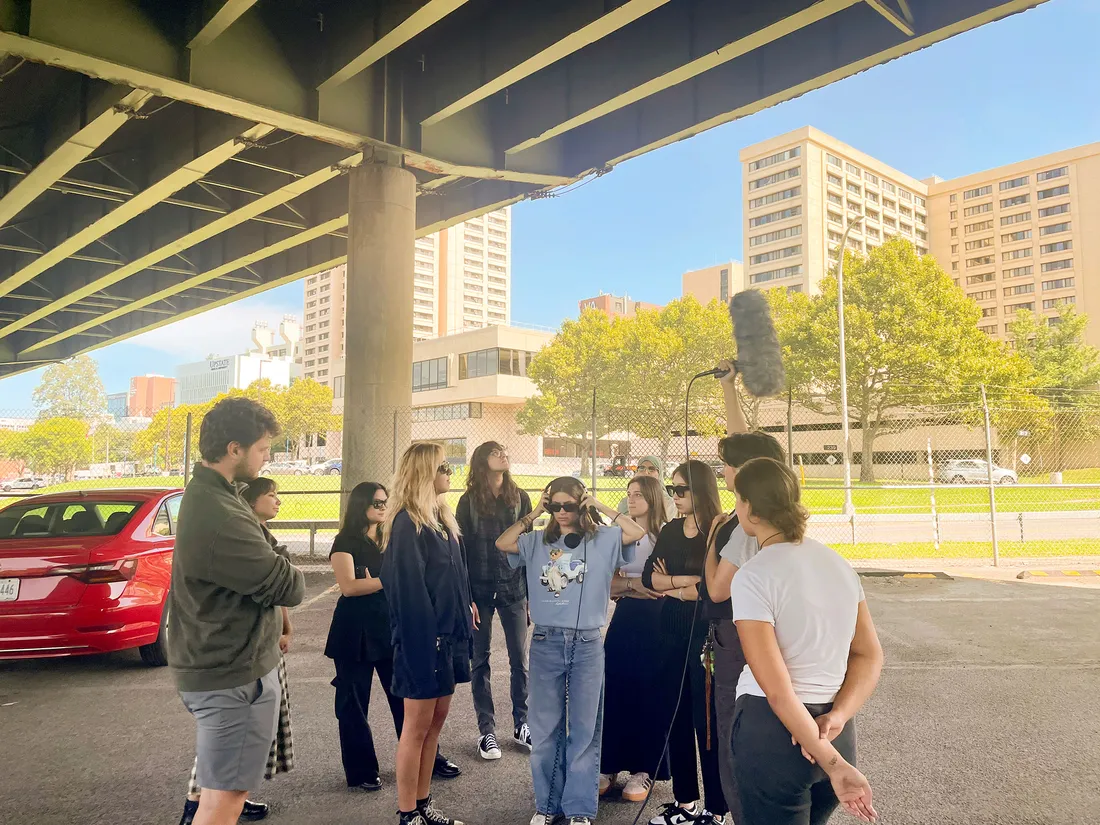
Students in Myers’ Fall 2024 semester course, Adventures in Audiosocial Space, listen to the sounds of the Interstate 81 viaduct in Syracuse.

